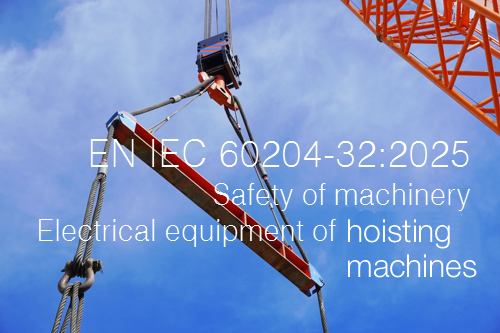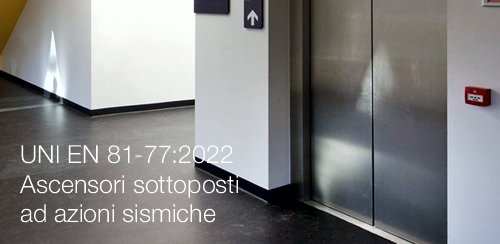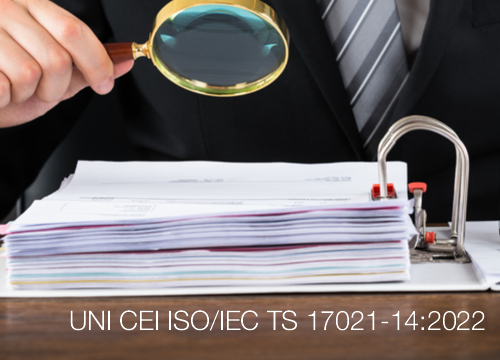EN IEC 60204-32:2025

EN IEC 60204-32:2025 / Electrical equipment requirements of hoisting machines
ID 24068 | 03.06.2025 / Third Ed. - Preview attached
EN IEC 60204-32:2025
Safety of machinery - Electrical equipment of machi...
Measurement of radioactivity in the environment -- Air: Radon-222 -- Part 9: Test methods for exhalation rate of building materials
This document specifies a method for the determination of the free radon exhalation rate of a batch of mineral based building materials. This document only refers to 222Rn exhalation determination using two test methods: liquid Scintillation Counting (LSC) and gamma ray spectrometry (see Annex A and Annex B).
The exhalation of thoron (220Rn) does not affect the test result when applying the determination methods described in this document.
https://www.iso.org/standard/76013.html
Introduction
Radon isotopes 222, 219 and 220 are radioactive gases produced by the disintegration of radium isotopes 226, 223 and 224, which are decay products of uranium-238, uranium-235 and thorium-232 respectively, and are all found in the earth's crust. Solid elements, also radioactive, followed by stable lead are produced by radon disintegration.
When disintegrating, radon emits alpha particles and generates solid decay products, which are also radioactive (polonium, bismuth, lead, etc.). The potential effects on human health of radon lie in its solid decay products rather than the gas itself.
Whether or not they are attached to atmospheric aerosols, radon decay products can be inhaled and deposited in the bronchopulmonary tree to varying depths according to their size.
Radon is today considered to be the main source of human exposure to natural radiation. UNSCEAR suggests that, at the worldwide level, radon accounts for around 52 % of global average exposure to natural radiation. The radiological impact of isotope 222 (48 %) is far more significant than isotope 220 (4 %), while isotope 219 is considered negligible. For this reason, references to radon in this document refer only to radon-222.
Radon activity concentration can vary from one to more orders of magnitude over time and space. Exposure to radon and its decay products varies tremendously from one area to another, as it depends on the amount of radon emitted by the soil, weather conditions, and on the degree of containment in the areas where individuals are exposed.
As radon tends to concentrate in enclosed spaces like houses, the main part of the population exposure is due to indoor radon. Soil gas is recognized as the most important source of residential radon through infiltration pathways. Other sources are described in other parts of ISO 11665 and ISO 13164 (all parts) for water.
Radon enters into buildings via diffusion mechanism caused by the all-time existing difference between radon activity concentrations in the underlying soil and inside the building, and via convection mechanism inconstantly generated by a difference in pressure between the air in the building and the air contained in the underlying soil. Indoor radon activity concentration depends on radon activity concentration in the underlying soil, the building structure, the equipment (chimney, ventilation systems, among others), the environmental parameters of the building (temperature, pressure, etc.) and the occupants’ lifestyle.
To limit the risk to individuals, a national reference level of 100 Bq·m−3 is recommended by the World Health Organization. Wherever this is not possible, this reference level should not exceed 300 Bq·m-3. This recommendation was endorsed by the European Community Member States that shall establish national reference levels for indoor radon activity concentrations. The reference levels for the annual average activity concentration in air shall not be higher than 300 Bq·m−3.
To reduce the risk to the overall population, building codes should be implemented that require radon prevention measures in buildings under construction and radon mitigating measures in existing buildings. Radon measurements are needed because building codes alone cannot guarantee that radon concentrations are below the reference level.
The radon atoms in materials are produced by the disintegration of the radium-226 contained in the mineral grains of the material. Some of these atoms reach the interstitial spaces between the grains: this is the phenomenon of emanation. Some of these atoms produced by emanation reach the material’s surface by diffusion and convection: this is the phenomenon of exhalation.
Values of the radon-222 surface exhalation rate observed for building materials vary from not detectable up to 5 mBq·m−2·s−1.
ISO 11665 consists of 12 parts (see Figure 1)
Fonte: ISO
Collegati:

ID 24068 | 03.06.2025 / Third Ed. - Preview attached
EN IEC 60204-32:2025
Safety of machinery - Electrical equipment of machi...

ID 17036 | 07.07.2022 / In allegato Preview
UNI EN 81-77:2022 Regole di sicurezza per la costruzione e l'installazione degli ascensori - Appl...

Valutazione della conformità - Requisiti per gli organismi che forniscono audit e certificazione di sistemi di gestione - Parte 14: Requisiti di competenza per le attiv...
Testata editoriale iscritta al n. 22/2024 del registro periodici della cancelleria del Tribunale di Perugia in data 19.11.2024